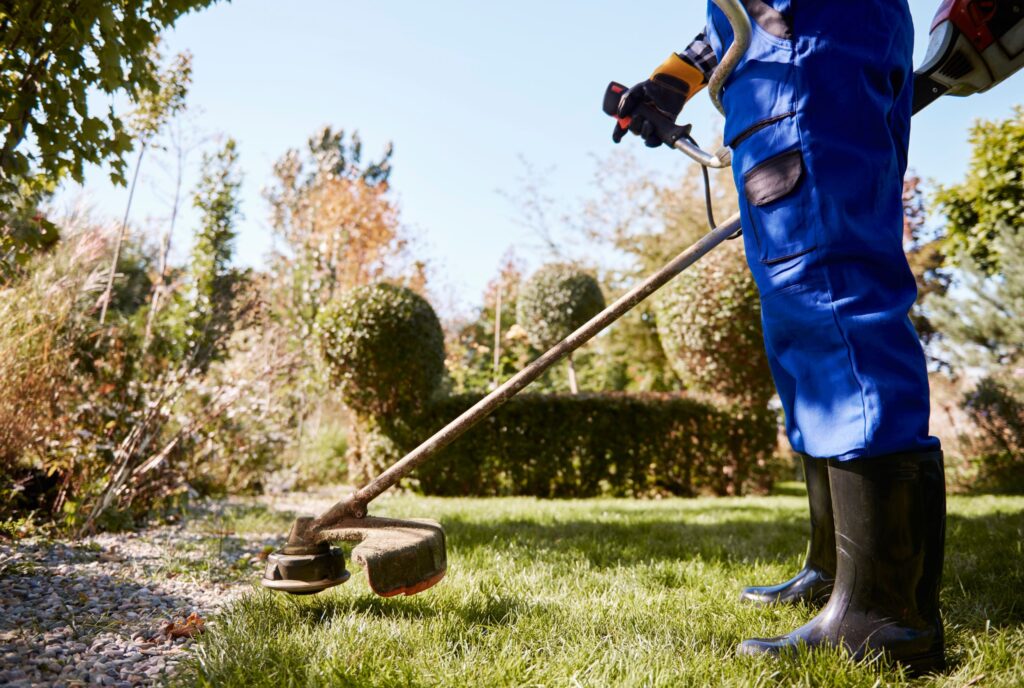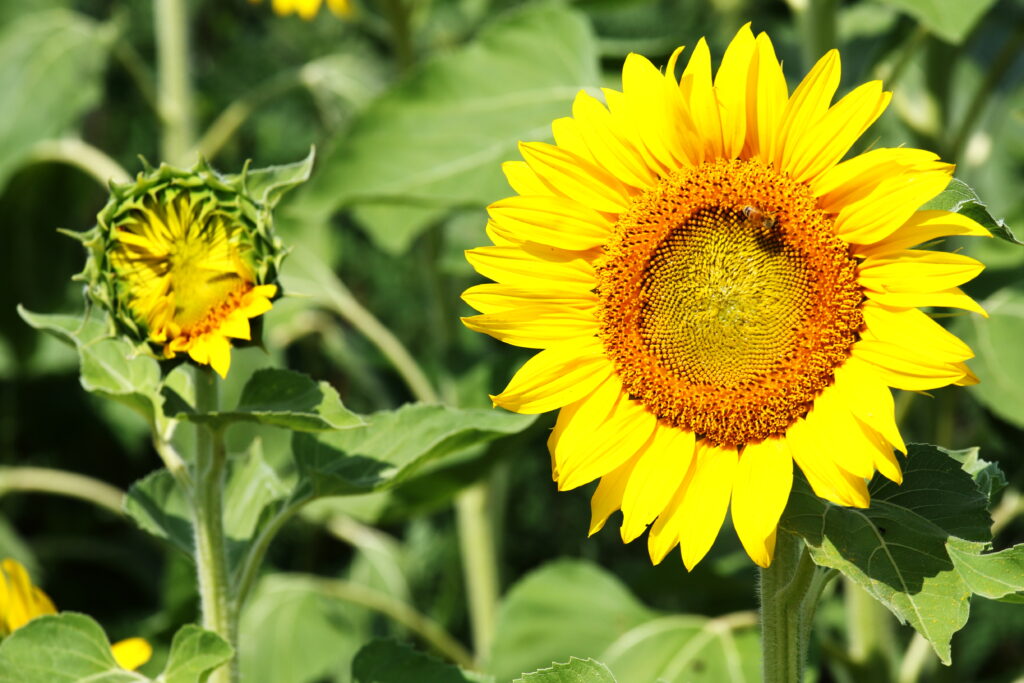What Can Be Done in August with Your Garden: A Guide from Emaan Landscaping Services

August is a time of high summer when gardens are in full swing. But even though the days are warm and sunny, it’s essential to keep your garden in check to ensure it thrives into the cooler months. At Emaan Landscaping Services, we know that summer maintenance is key to a beautiful garden year-round. Here’s a comprehensive guide on what you can do in August to keep your outdoor space lush, vibrant, and ready for the fall season. **1. ** Mid-Summer Garden Maintenance By August, your garden has been through several months of growth, and it’s time to give it some mid-summer TLC. Regularly deadhead flowers to promote more blooms and prevent plants from going to seed. Pruning spent blossoms and removing any dead or diseased foliage will help plants stay healthy and look their best. Tip: A clean and tidy garden not only looks great but also reduces the risk of pest infestations. **2. ** Watering Wisely August often brings high temperatures, which can put a strain on your garden’s water supply. Ensure your plants are receiving adequate moisture by watering deeply and less frequently. This encourages roots to grow deeper and makes them more drought-resistant. Tip: Early morning is the best time to water your garden to minimize evaporation and give your plants a refreshing start to the day. **3. ** Lawn Care Your lawn might need extra attention in August to keep it green and healthy. Mow regularly, but be sure not to cut the grass too short as it can increase susceptibility to drought and pests. Additionally, consider aerating the lawn to improve soil health and allow for better nutrient absorption. Tip: If your lawn is looking particularly stressed, a light application of compost or a balanced fertilizer can give it a much-needed boost. **4. ** Plan for Autumn Planting August is a great time to start planning your autumn garden. Now is the perfect time to prepare garden beds for fall planting. You can start sowing seeds for cool-weather crops like spinach, lettuce, and radishes. Additionally, consider planting perennials that will establish roots now and bloom beautifully next spring. Tip: Check your local nursery for fall-blooming flowers and shrubs that can add color to your garden as the season changes. **5. ** Weed and Mulch Weeds can quickly take over a garden, especially during the summer months. Regularly remove weeds by hand or with a hoe, and apply a layer of mulch around your plants to suppress new weed growth. Mulch also helps retain soil moisture and regulate soil temperature. Tip: Organic mulch, such as shredded bark or straw, can improve soil quality as it decomposes. **6. ** Pest and Disease Control Keep an eye out for pests and diseases that may affect your garden. Common summer pests include aphids, spider mites, and caterpillars. Use organic or chemical treatments as needed, and always follow the instructions carefully. For diseases, ensure proper spacing between plants and provide adequate airflow to reduce humidity, which can foster fungal infections. Tip: Beneficial insects like ladybugs and lacewings can help keep pest populations in check naturally. **7. ** Garden Structures and Furniture August is a good time to inspect and maintain any garden structures, such as trellises, fences, and garden furniture. Check for any damage or wear and make necessary repairs to ensure they are in good condition for the rest of the season. Tip: Cleaning and treating wooden structures with a protective sealant can extend their lifespan and keep them looking fresh. **8. ** Harvest and Preserve If you have a vegetable or herb garden, August is often a time of bountiful harvest. Regularly pick ripe produce to encourage continued fruiting and prevent overripening. Consider preserving excess produce through canning, freezing, or drying so you can enjoy your garden’s bounty throughout the year. Tip: Herbs like basil and parsley can be dried or frozen in ice cube trays with a bit of olive oil for convenient use later. August is a vital month for garden care, setting the stage for a smooth transition into the fall. By following these tips from Emaan Landscaping Services, you can ensure your garden remains vibrant, healthy, and prepared for the upcoming seasons. If you need help with any of these tasks or want to enhance your garden further, don’t hesitate to contact us. Our team of experts is here to assist you with all your landscaping needs, ensuring your outdoor space is the envy of the neighborhood. Happy gardening! 🌻 For more tips and personalized advice, give us a call at +447508861619.
Sunflowers in August: A Quick Guide to Growing and Caring

Welcome to August, a vibrant chapter in the gardening year where the fruits of your labour are sweetly realized! As summer reaches its peak, your garden bursts with life, offering a cornucopia of colours, textures, and flavours. This month presents a unique blend of opportunities and challenges, from harvesting lush vegetables to planting for the crisp days ahead. Let’s dive into how you can make the most of this lush time in your outdoor oasis! Sunflowers in August Sunflowers are a summer garden favourite, known for their vibrant blooms and ecological benefits. They attract pollinators like bees and butterflies, improve soil health with their deep roots, and provide nutritious seeds for snacking or bird feeding. Plus, their bright, towering presence adds a cheerful touch to any garden. It is important to remember choosing the Right Variety We have the option of the Mammoth Sunflowers, Tall giants, up to 12 feet, great for harvesting seeds. The Autumn Beauty is A mix of red, orange, and yellow blooms, ideal for ornamental use and last but not least The Teddy Bear , Dwarf variety, grows 2-3 feet, perfect for small spaces or containers. Planting and Care Tips For best care choose a spot with 6-8 hours of direct sunlight daily. Plant in well-draining soil, about 1-2 inches deep, spacing seeds 6-12 inches apart. Remember Water deeply and regularly, especially in early growth stages. Keep soil moist but not waterlogged. Taller varieties may need staking to prevent toppling. Don’t forget to watch for aphids or mildew; use natural remedies like neem oil if needed. For harvesting seeds wait until the flower heads turn brown, then cut and dry them upside down. Once dry, remove the seeds for a tasty snack or bird feed. Enjoy fresh sunflower bouquets indoors or leave some flowers on the plant to attract birds, alternatively use sunflowers in DIY crafts like wreaths or dried arrangements. Regardless of use they are a must-have in August gardens. Vegetable right at your disposal – spinach Spinach is a cool-season leafy green that’s perfect for planting in August. It grows quickly, maturing in just 4-6 weeks, and is packed with nutrients like vitamins A, C, K, and iron. Spinach is versatile in the kitchen, great for salads, soups, and more. Plus, it’s cold hardy, tolerating light frosts, making it ideal for fall gardening. Tips and guide to getting started When planting spinach consider varieties like *Bloomsdale Long Standing* (resistant to bolting), *Tyee* (slow to bolt), and *Space* (smooth-leafed). Prepare well-draining, fertile soil with compost. Plant seeds ½ inch deep, spaced 2-4 inches apart, and keep the soil moist. Sow every two weeks for continuous harvests. Thin seedlings to 4-6 inches apart, mulch to retain moisture, and use organic pest control if needed.Harvesting and StorageBegin picking leaves when they’re 3-4 inches l ng for baby spinach, or 6 inches for larger leaves. Use the “cut-and-come-again” method to prolong the harvest. Fresh spinach lasts a few days in the fridge, or blanch and freeze it for up to six months.Spinach is an excellent choice for August planting, offering fast growth, nutritional value, and adaptability to cooler weather. It’s a must-have for a productive fall garden!
